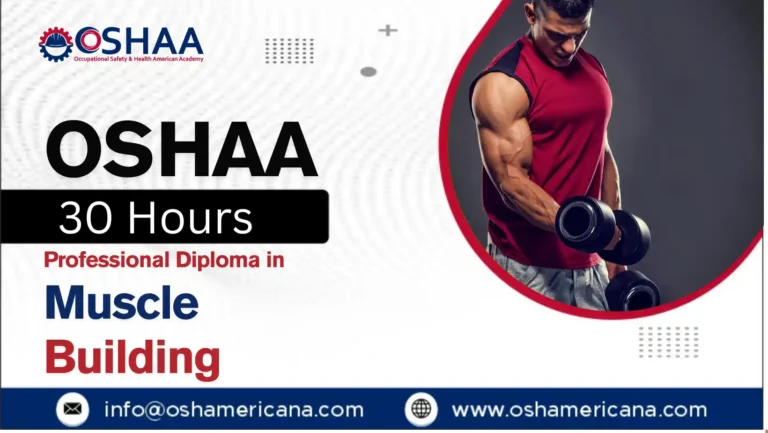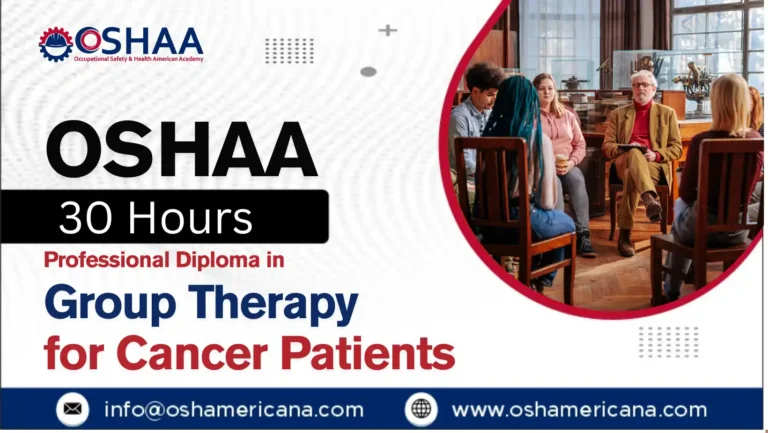The OSHAA 30-Hours Professional Diploma in Automated External Defibrillator (AED) Programme is a focused and practical training designed to equip participants with the critical skills required to operate AED devices effectively during cardiac emergencies. As sudden cardiac arrest remains a leading cause of death worldwide, the ability to respond promptly with AED intervention can significantly increase survival rates. This professional diploma provides participants with the knowledge, confidence, and hands-on experience necessary to use AEDs correctly and safely in various environments.
Awarded by OSHAA, a respected body known for its commitment to high standards in health and safety education, this programme aligns with international best practices and current resuscitation guidelines. Participants learn the vital importance of early defibrillation as part of the chain of survival and how AEDs integrate with cardiopulmonary resuscitation (CPR) to maximise life-saving outcomes.
The course content covers fundamental topics such as understanding cardiac arrest physiology, recognising sudden cardiac arrest signs, safe AED operation, troubleshooting common issues, and maintaining AED equipment. Emphasis is placed on practical training, allowing participants to practice AED application and rhythm analysis on mannequins under realistic scenarios. This hands-on approach ensures participants are prepared to act swiftly and effectively in real-life emergencies.
Suitable for workplace first aiders, healthcare professionals, emergency responders, and community members, the diploma enhances participants’ ability to contribute confidently to emergency response teams. It supports organisations in meeting health and safety obligations by ensuring that personnel are trained in AED use and emergency cardiac care.
Upon successful completion, participants will hold a recognised qualification that boosts their professional credentials and readiness to save lives. The OSHAA 30-Hours Professional Diploma in Automated External Defibrillator Programme is an essential investment for anyone dedicated to improving emergency preparedness and making a critical difference when every second counts.
OSHAA 30-Hours Professional Diploma in Automated External Defibrillator (AED) Programme
Study Units
Learning Outcomes
Introduction to Cardiac Arrest and the Importance of Early Defibrillation (3 Hours)
- Understand the causes and impact of cardiac arrest
- Recognise the critical role of early defibrillation in improving survival rates
- Comprehend the chain of survival and how AED fits into emergency response
Anatomy and Physiology of the Heart and Circulatory System (3 Hours)
- Gain knowledge of heart structure and function
- Understand the basics of the circulatory system relevant to cardiac emergencies
- Identify how cardiac arrest affects heart and blood flow
Recognition of Sudden Cardiac Arrest and Emergency Response (4 Hours)
- Identify signs and symptoms of sudden cardiac arrest
- Learn appropriate steps to initiate emergency response
- Develop skills to assess and prioritise emergency situations
Fundamentals of Automated External Defibrillator (AED) Technology (3 Hours)
- Understand how AED devices work and their components
- Learn about different types of AEDs and their functions
- Recognise the limitations and capabilities of AED technology
Safe Operation and Application of AED Devices (5 Hours)
- Demonstrate correct use of AED devices following safety protocols
- Apply AED pads properly and operate the device confidently
- Manage safety for both casualty and responders during AED use
Integration of CPR and AED Use in Cardiac Emergencies (4 Hours)
- Understand how CPR complements AED use during cardiac arrest
- Perform coordinated CPR and AED procedures effectively
- Maintain high-quality chest compressions with minimal interruptions
Troubleshooting Common AED Issues and Device Maintenance (3 Hours)
- Identify and resolve common operational problems with AED devices
- Understand maintenance routines to ensure AED readiness
- Learn to check and replace AED batteries and pads appropriately
Legal and Ethical Considerations in AED Use (2 Hours)
- Understand legal responsibilities and protections for AED users
- Recognise ethical issues related to emergency care and AED application
- Learn about consent and liability in emergency situations
Emergency Scenario Simulations and Practical AED Training (3 Hours)
- Participate in realistic emergency simulations involving AED use
- Develop hands-on experience applying AED skills under pressure
- Build confidence and decision-making abilities for real-life emergencies
- Provides essential skills to recognise and respond effectively to sudden cardiac arrest
- Equips participants with the confidence and competence to operate AED devices safely and correctly
- Enhances ability to integrate CPR and AED use for improved survival outcomes
- Develops practical, hands-on experience through realistic emergency scenario training
- Increases awareness of legal and ethical responsibilities related to AED use
- Supports workplace and community preparedness for cardiac emergencies
- Improves readiness to maintain and troubleshoot AED equipment ensuring device reliability
- Offers an internationally recognised qualification that boosts professional credibility
- Empowers participants to act decisively in critical situations where every second counts
- Contributes to safer environments by increasing the number of trained responders capable of saving lives
- Participants working as workplace first aiders responsible for emergency response
- Healthcare professionals seeking specialised AED training
- Emergency responders and rescue personnel requiring certified defibrillator skills
- Community volunteers involved in public safety and health initiatives
- Fitness trainers, coaches, and sports facility staff managing athletic environments
- Staff in schools, childcare centres, and educational institutions responsible for safety
- Individuals aiming to enhance their life-saving skills and emergency preparedness
- Organisations looking to comply with health and safety regulations by training staff in AED use







